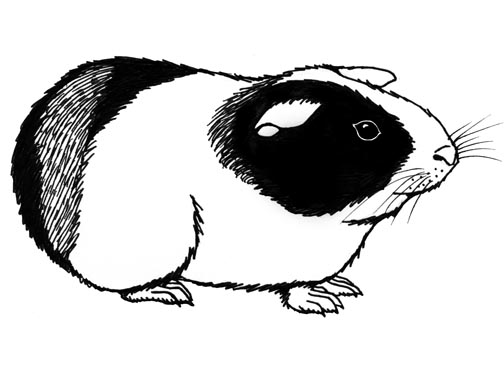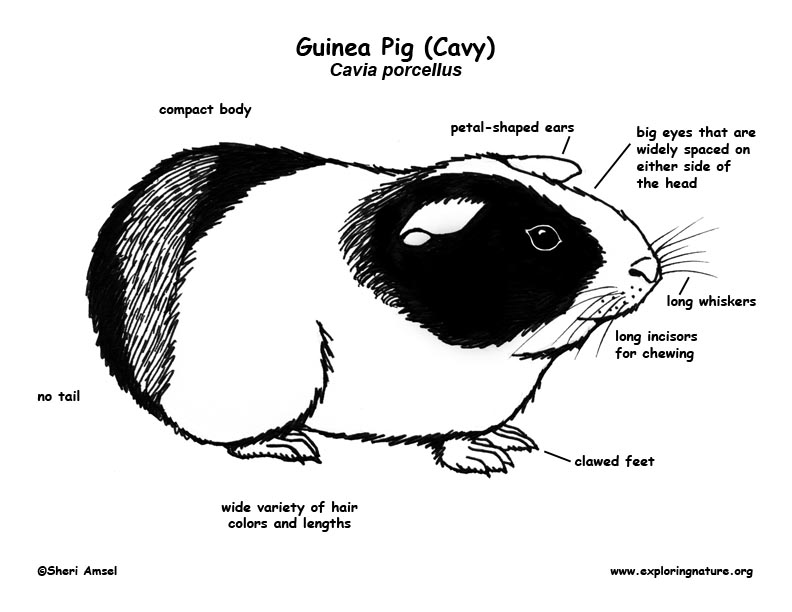

They are no longer found in the wild.
They are no longer found in the wild, but scientists believe they originated on the grass slopes of the Andes in South America.
They are rodents with long incisors for chewing that grow throughout their lives. They reach up to 10 inches long (25 cm) and can weigh up to 2.5 pounds (1.1 kg). They have compact bodies with no tail. They have big eyes that are widely spaced on either side of the head and about half way between the ears and tip of the nose. They have a wide variety of hair colors and lengths which have been developed through breeding for the pet trade.
They are docile animals, which is why they have been popular in the pet trade. When in their wild habitat, they were thought to have lived in small groups of females with young and one male. In captivity, they are group animals and spend a lot of time grooming. They are active at dawn and dusk (crepuscular). This would make sense for their wild habitat when the low light would keep them hidden from predators. When startled, they freeze and can stay still for a long period of time. They will then dart for cover. Groups of guinea pigs may scatter when startled or hop around to confuse predators. This action is called “popcorning”. They don’t burrow but will shelter in the abandoned burrows of other animals or in rock crevices. They communicate with a range of interesting noises from chirping and purring to shrieking and whistling (called wheeking). Each sound seems to express a different guinea pig emotion: whistling or squealing when they are agitated, purring when they are contented, chattering as a warning, chirping when hungry and rumbling when angry or asserting dominance.
They eat grass and other plants.
They can have up to 5 litters a year. Females are pregnant for a little over two months (gestation) - about 65 days. They have up to 6 young (usually 3) that have fur, teeth and claws at birth and can eat food right away. Females nurse their young for only 203 weeks and then they are on their own.
They can live up to about 8 years but usually average 4-5 years. They are considered extinct in the wild.
Kingdom: Animalia
Phylum: Chordata
Class: Mammalia
Order: Rodentia
Suborder: Hystricomorpha
Family: Caviidae
Subfamily: Caviinae
Genus: Cavia
Species: C. porcellus
When you research information you must cite the reference. Citing for websites is different from citing from books, magazines and periodicals. The style of citing shown here is from the MLA Style Citations (Modern Language Association).
When citing a WEBSITE the general format is as follows.
Author Last Name, First Name(s). "Title: Subtitle of Part of Web Page, if appropriate." Title: Subtitle: Section of Page if appropriate. Sponsoring/Publishing Agency, If Given. Additional significant descriptive information. Date of Electronic Publication or other Date, such as Last Updated. Day Month Year of access < URL >.
Amsel, Sheri. "Guinea Pig (Cavy)" Exploring Nature Educational Resource ©2005-2024. December 15, 2024
< http://www.exploringnature.org/db/view/500 >

